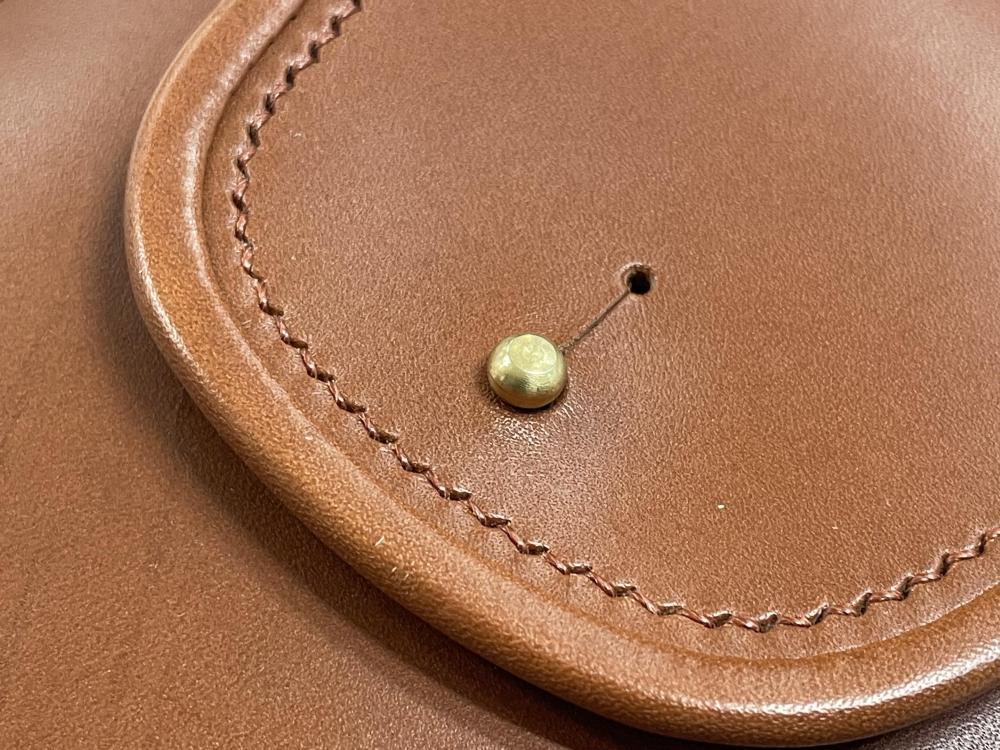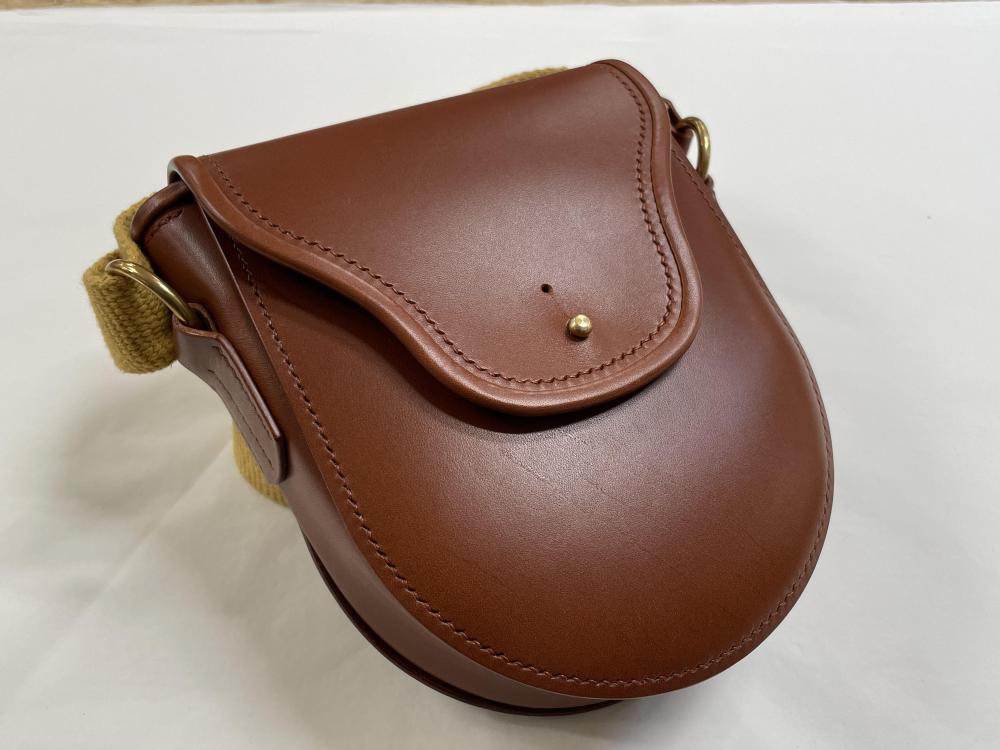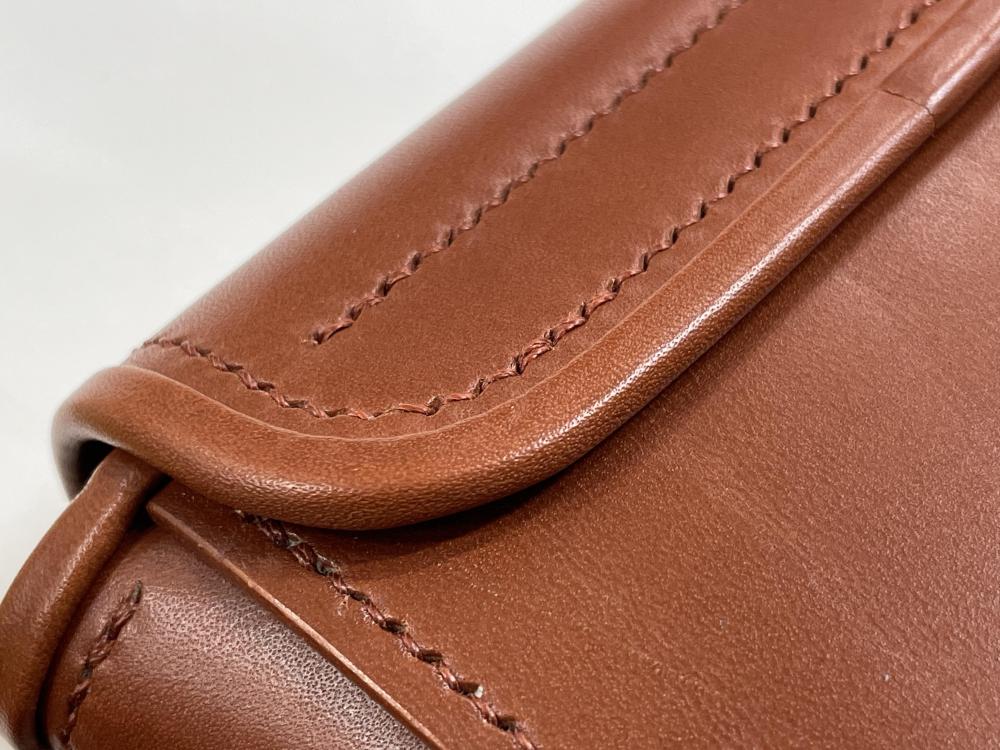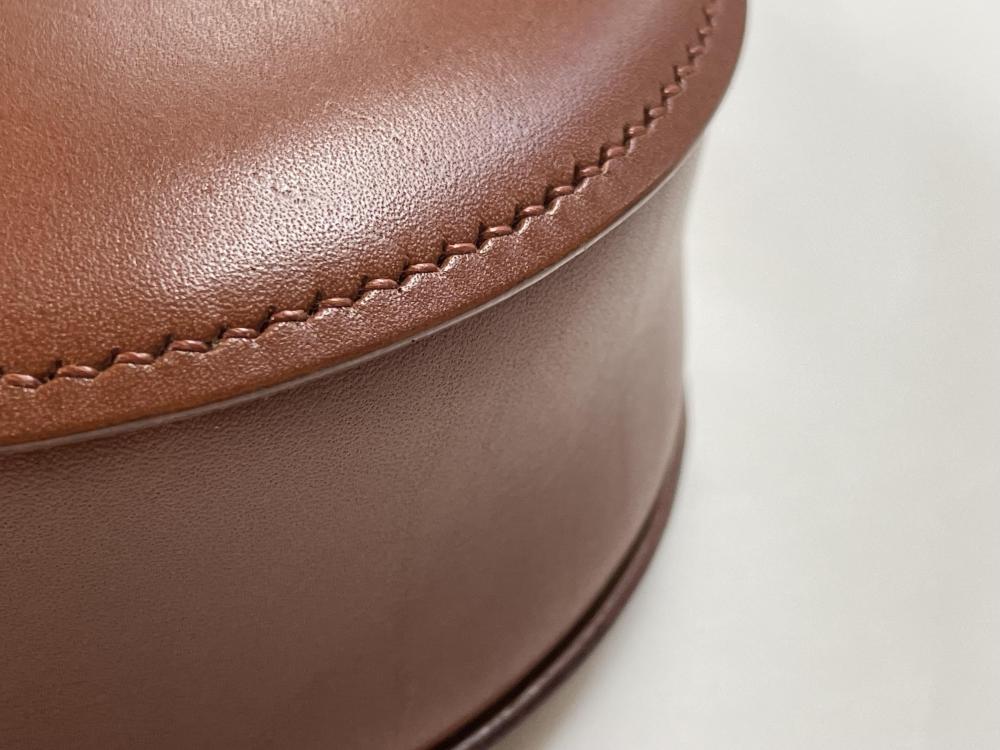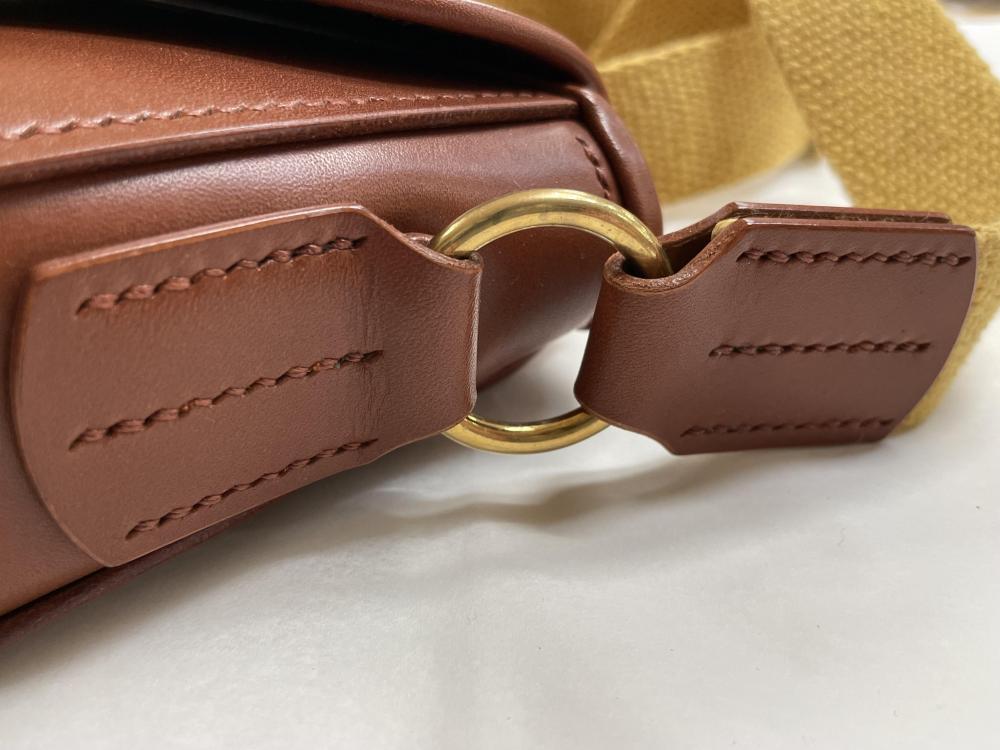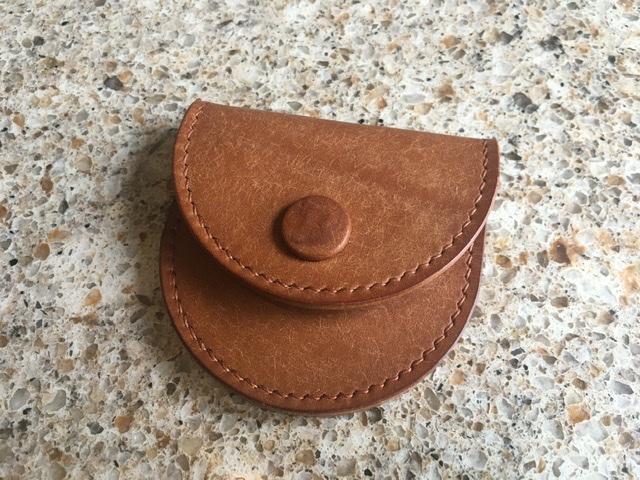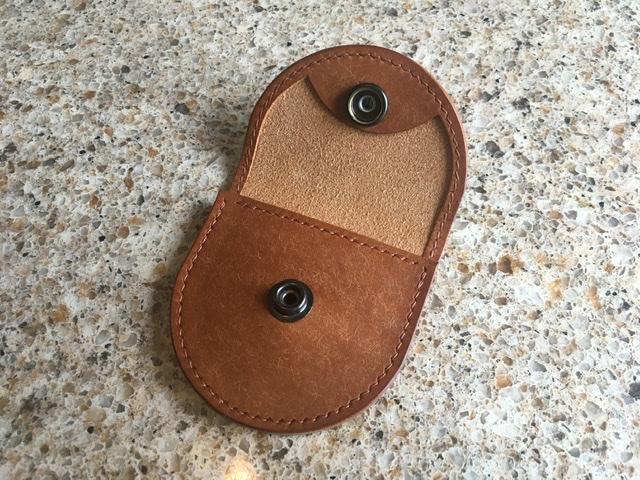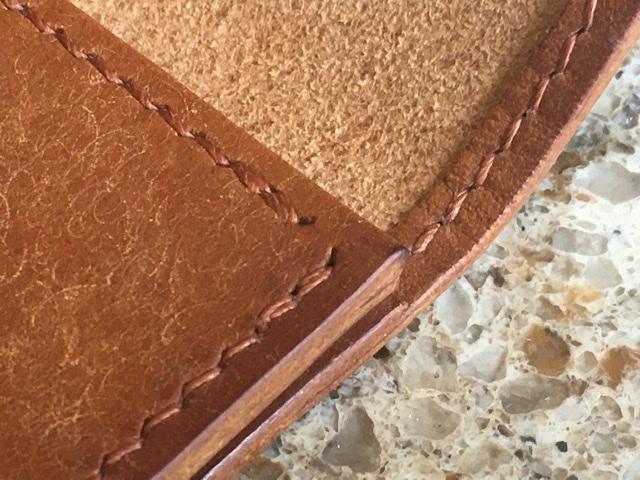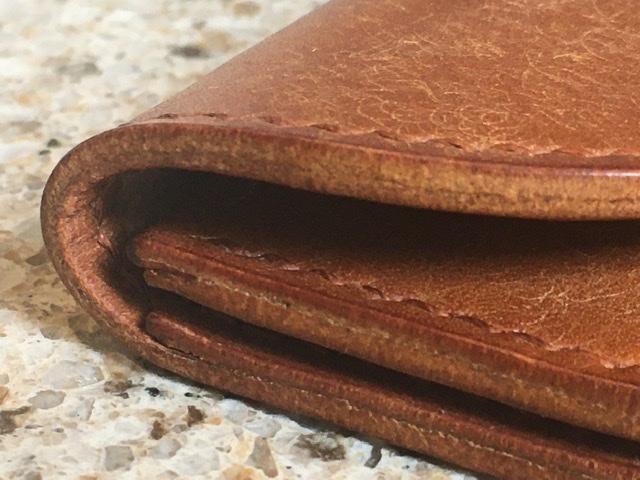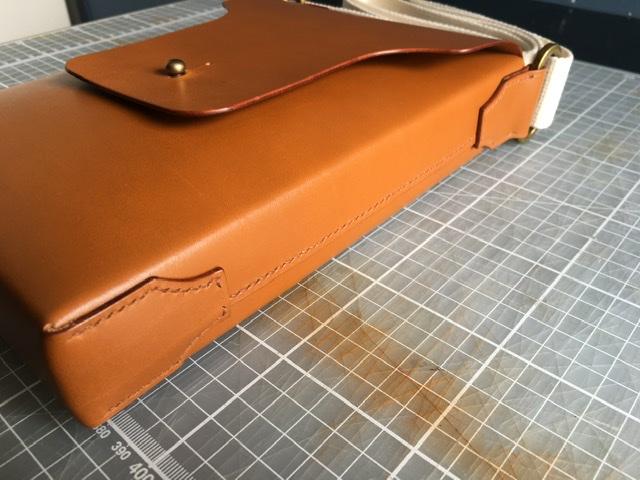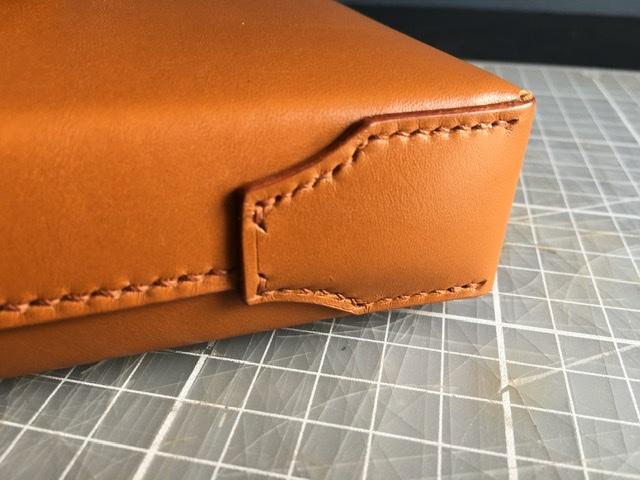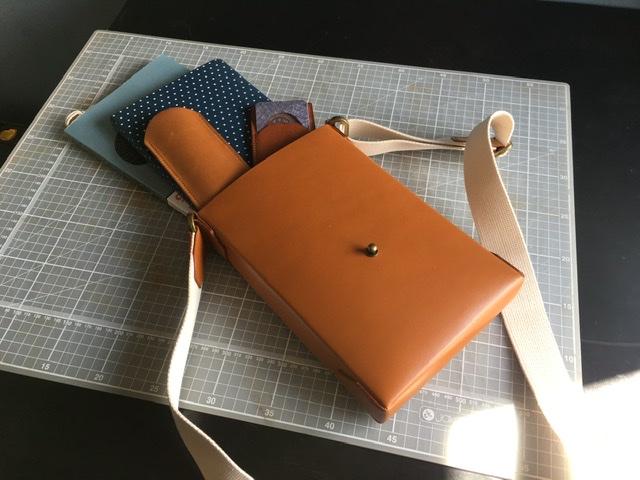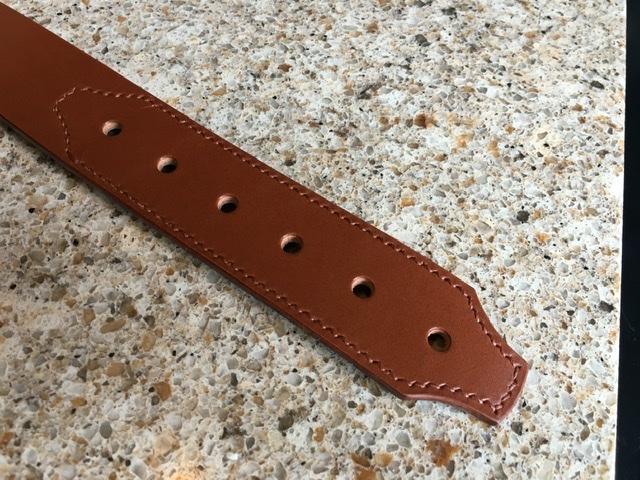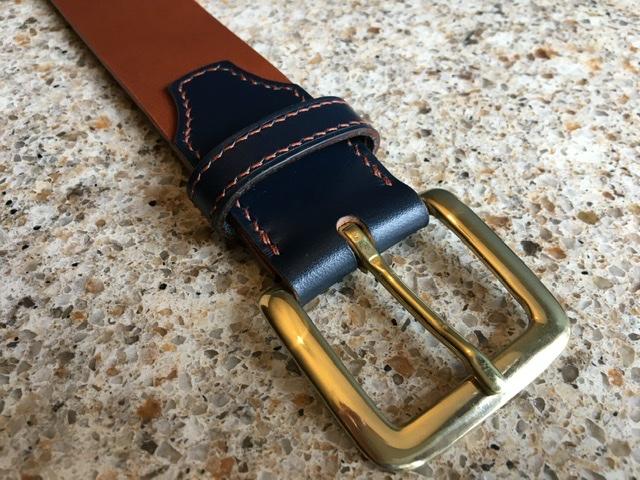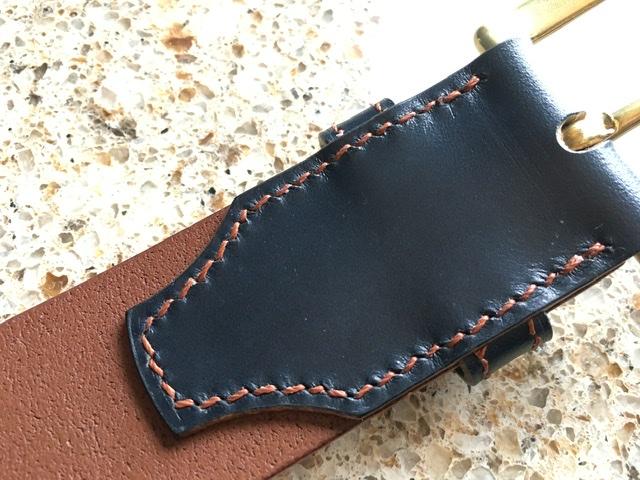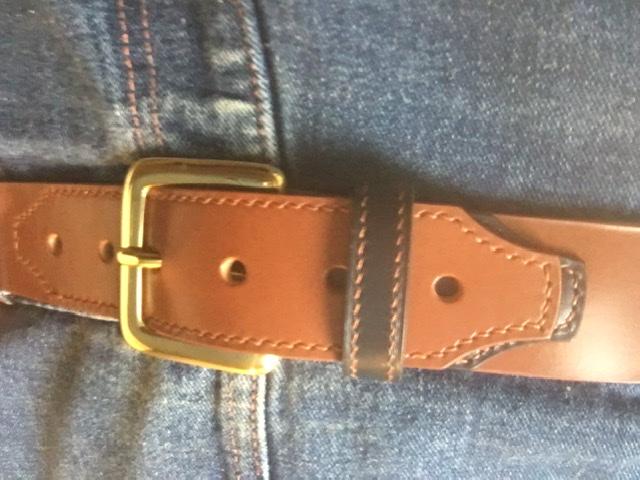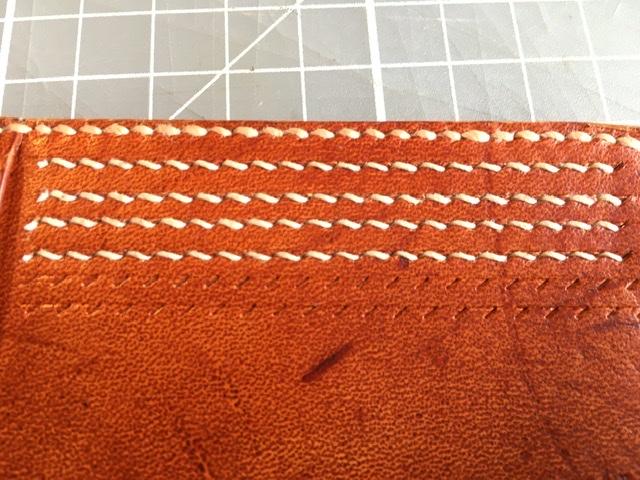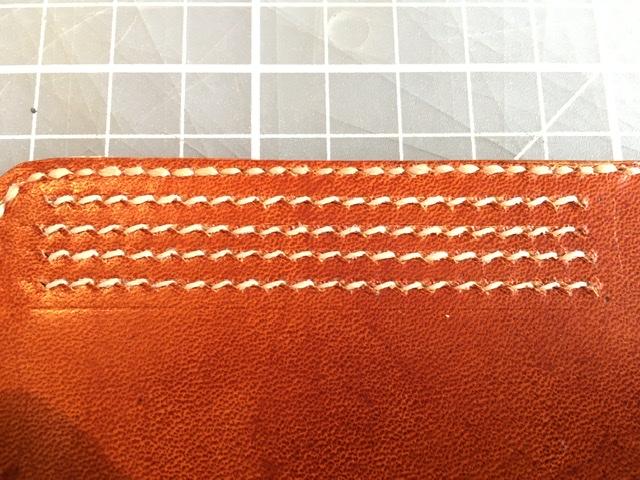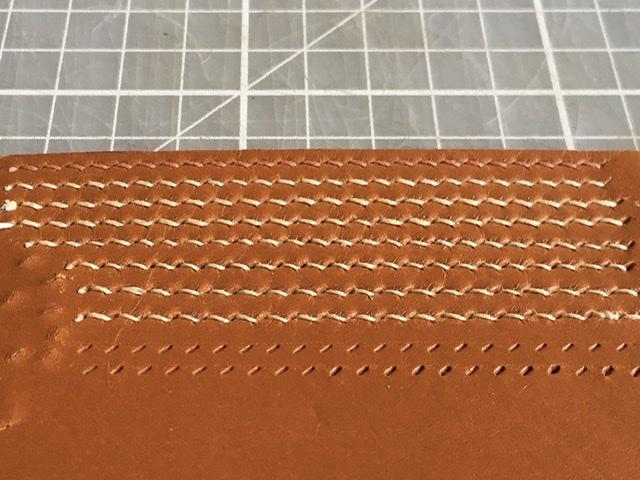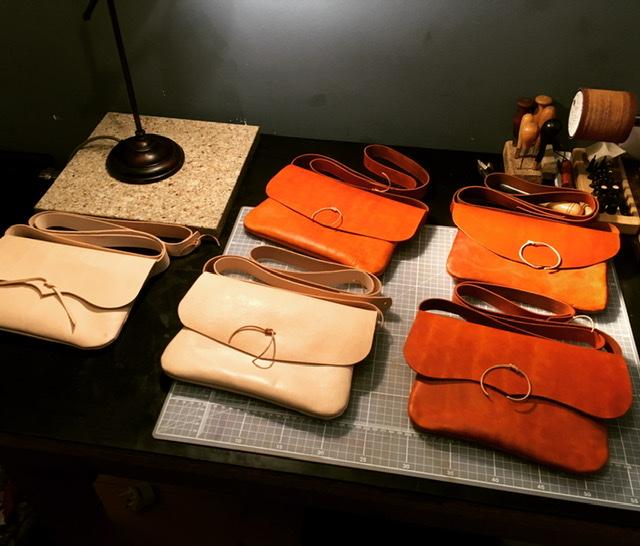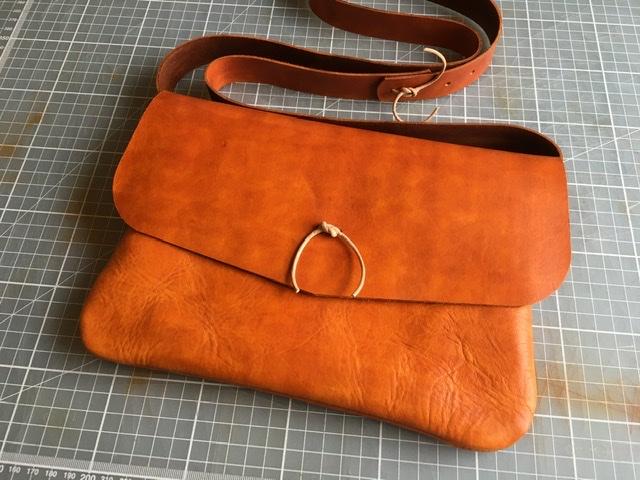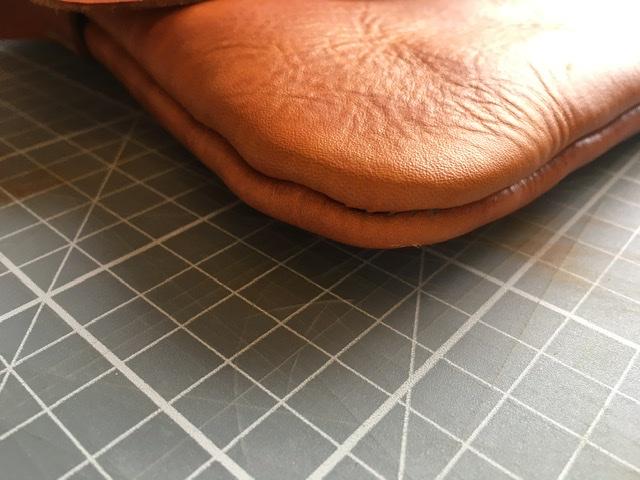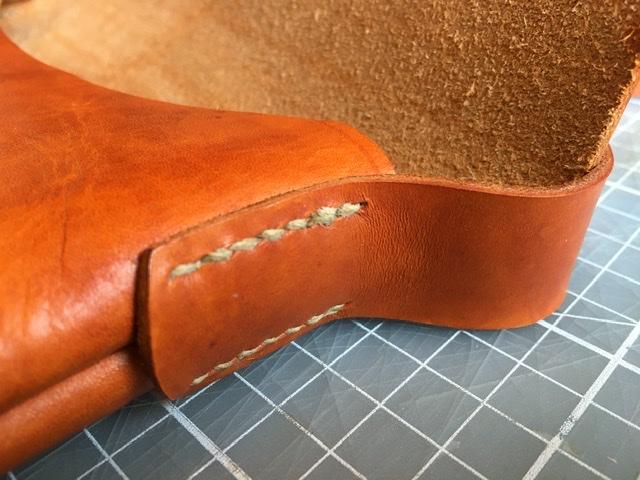
Prusty
Members-
Posts
64 -
Joined
-
Last visited
Content Type
Profiles
Forums
Events
Blogs
Gallery
Everything posted by Prusty
-
If I saw someone wearing that out and about I’d be thinking Arthur Morgan and want to yell Lenny, so I think you nailed it.
-
I’m still confused what you mean by bump? I’m confused as to what bump you mean and what you’re trying to refer to as glued down in that image. Just so I know we’re on the same page this is a French edge binding. The binding is first stitched grain to grain, then turned over itself and the edge of the leather, hiding that first line of stitching. It’s then secured down with the second line of stitching. So it’s two lines of stitching, but one is hidden.
-
Looks pretty cute with the extended section for the handle. I don’t do much if any decorative stamping, can you explain what difference taping it would’ve made?
-
I’m not sure what you mean by the bump? Do you mean where the binding goes back over itself? The flared gusset is partly a measuring error, but a number of people I consulted quite liked it and how it gives more room to get in when it’s open. It also stops the straps rubbing the lid so much, so I guess it has its uses. The holes are all pre-punched and lined up before I glue and stitch the lining, after which I fold it around and glue it again before the second stitch line. I’d prefer to just prick, but to get it all to line up for the flap/body connection it’s easier and more reliable to pre-punch with the iron.
-
Thank you! I did burnish the strap loops but they got roughed up during the process of attaching them. Next time I’m going to be designing them a bit differently so that they’re a bit easier to burnish nicely. I went for a canvas strap partly as it suits my aesthetic, and partly because I made this to sell and didn’t want the extra cost of burnishing/stitching a leather strap. This was already pushing it in terms of final price and I was happier to compromise on the strap than anything else. It’s a bit more mustard than I expected. I think next time I’m going to use a stiffer natural colour canvas instead.
-
I have some documents from when I did 12th century reenactment that cover dying methods. One I believe is called the Mappae Clavicula which if I remember right is from 820ce. I will look up my old research links later and link then here if that’ll be of help. But fair warning, most of the dyes involved stale urine and a good number involved animal faeces.
-
This is my second large-ish project after about a year’s absence. I had the idea for this back in 2022 but never felt I had the design quite right. Turns out it only took 3 years of rumination to figure it out! It’s made from 2.5mm lamport shoulder, split down for the gusset and for the binding. I considered a darker or lighter leather for the French binding, but ultimately never felt it looked correct. Any questions or critique is welcome!
-
Wee Coin Purse
Prusty replied to Prusty's topic in Purses, Wallets, Belts and Miscellaneous Pocket Items
The leather is pueblo, for something like this it’s pretty nice to use. Thinning it down can be a pain though for whatever reason. The snap was something I’d wanted to try for a long time, unfortunately I fixed it before I gave the glue time to dry. If you look closely you can see some discolouration from the glue trying to bleed through. Very silly mistake! -
After watching Nigel Armitage’s videos on horseshoe gussets I decided to have a go at making a simple purse using that gusset design. I then also decided to over-complicate it with a turned edge, second layer on the lid, and leather-covered button, all firsts for me. The covered button has a couple of still visible slots on the leather, and the gusset is only stitched in place and would benefit from some glue as the layers want to separate a bit. I also cut the gussets a touch shorter than the front panel which is annoying. Still, I’m kind of happy with it, though it does need a few refinements.
-
Crossbody Book Bag
Prusty replied to Prusty's topic in Purses, Wallets, Belts and Miscellaneous Pocket Items
No, I don’t have any experience with linings yet, or how to best incorporate them into a design without it looking shabby. 2.2-2.4mm dyed-through vegtan, I don’t know or understand the weight measurement system! -
This is a first attempt at a new-ish bag pattern for me. I made a couple of larger bags similar to this a bit over a year ago, and wanted to try making something a bit smaller. I don’t tend to carry much when I go out, so I don’t want a larger bag. Theres a bunch of details to change. The seam down the side was meant to be central but I kicked up a measurement around 3 different times. The tabs and strap loops need thicker thread and wider stitching, it looks way to small right now. I need to find a better way of marking and stitching the bottom tabs, they have no glue and will hold, but I don’t like relying just on the stitching. But the design is something I like, so back to the pattern I go for the next one. Got plenty of time to spare right now!
-
If anything this is MORE our priority today than it was for most of history, in Europe at any rate. People did take pride in their work, but most crafters got paid very little for their work, to the point where we know of at least one cordwainer who lived in a dog kennel. We only have the good leatherwork left, most of it was made fast for cash and was cut up and reused until it was finally binned. There’s a load of knife sheaths found in the river Thames from 12th-15th century that show what the moneyed middle classes were carrying, and a lot of them were cheap and quickly made.
-
Lots medieval European manuscripts have what’s called marginalia, weird and often obscene doodles in the margins. It’s fun to look up some for a laugh. This is spot on, even the accessories of kings and queens throughout history were not perfect as we would expect today. The details were not important back then, what mattered was the overall impression. When you look at this book you really don’t notice the mistakes unless you go looking for them, the overall impression is a thing of beauty.
-
I became obsessed with this book a few years back trying to learn about historic tooling on leather. It’s a fabulous thing to look at and examine, and reveals so much about the methods used in that time period. Also, it’s encouraging to see that they made mistakes back in the 8th century and just ran with it, look at the lower left corner in the border and you’ll see the pattern goes wrong. And the upper section of knotwork they didn’t do evenly at all!
-
Two-tone bridle belt
Prusty replied to Prusty's topic in Purses, Wallets, Belts and Miscellaneous Pocket Items
About 10 minutes after cutting the end and marking up the stitches I realised my mistake, but at that point I was committed. Just need to keep active during this quarantine and it won’t be a problem! -
I had this design kicking around in my head for a while, and just got around to trying it out. It’s made using 3.5mm and 2mm English bridle leather, stitched with Yue Fung thread, and given a hot wax burnish on the edges. The keeper is a bit too wide and was a pain to stitch. The whole buckle arrangement was a bit of a faff generally, this design would really benefit from using a reversed pricking iron to line it all up. There’s some odd long and short stitches in the corners too, and the tail is a bit too short. But the overall look has promise, so I’ll have to come back to this design. Any critique or feedback that anyone has is greatly appreciated!
-
Thanks mate, I’ll give that a shot, both the notch and the ring. Gives me an excuse to buy a new awl or two!
-
So I had to take a fairly long break from leatherwork after a bad period of health and a significant hand injury. I've been back at it since the end of last year, and I've noticed my hand-stitching has degraded, particularly the reverse of whatever I'm stitching. What once felt natural and easy is now awkward and frustratingly difficult. You should be able to see in the photos below how the stitch line wobbles about a bunch. For context, using Amy Roke irons with a 1.8mm wide awl, held in a saddlers clam. Does anyone have any advice they could give for getting better at hand stitching, in particular advice on how to keep the awl going through at the right angle? If anyone has been in the same position I'd love to hear how they got past it, or even just to be told that it will take time and patience. Anything right now would be a big help!
-
I finally got around to finishing my partner’s Christmas gift, just in time for it to become a late birthday gift. I’d made a few re-enactment pouches of this style before, and decided to update the design a bit. Made from 2.5mm veg tan dyed with Identity Store water stain. if I were to change it, I’d get rid of the snap hooks and have the belt loops fixed to the pouch, there’s no really need for them to be detachable. I’d also use a different thread colour that doesn’t clash as much, though my partner likes it. And I’d use a 2mm leather, 2.5mm is way too thick for something like this. Any other feedback and critique is appreciated!
-
Airbrushed wallet
Prusty replied to DomsLeather's topic in Purses, Wallets, Belts and Miscellaneous Pocket Items
That is really bloody impressive. Any chance of some photos to show the size/scale? -
Looks pretty interesting, I’d be pretty interested to see more of what the method you use is, and probably most of this forum too.
-
A small collection of 12th-15th century satchels I made recently. I have a hard time letting stuff be intentionally a bit rough, but for historical pieces you want a little roughness to the cutting and stitching. 2mm veg-tan leather, each one was dyed then treated with grease, before being softened on a blunt axe acting as a staking knife. I experimented with two treatments, a tallow/lanolin/beeswax/oil mix which is very waterproof but gummy, and a tallow/oil mix which is less waterproof and softening but easier to work in. Turning the corners was a right pain! Any questions or feedback, especially information of greases, would be greatly appreciated.
-
Diamond Chisel Holder
Prusty replied to KJD2121's topic in Gun Holsters, Rifle Slings and Knife Sheathes
Very nice! Need to make something like that for my irons sometime. -
Wee little card wallet
Prusty replied to Prusty's topic in Purses, Wallets, Belts and Miscellaneous Pocket Items
Thanks for the feedback! I’ve tried Nigel’s method of stitching corners, and I’ve never liked it. I’ve found the hole it makes is too wide on one side and too small on the other, and end ups deforming the leather at the edges on these softer hides. Maybe a thinner round awl would help, but my experience is it makes small pieces such as this a bit too rough looking. The same is kind of true for the stitching, I experimented with .65, .55mm and .45mm threads and found the thinnest thread looks best. For the size of the wallet the thicker thread look very coarse, and I’m not a fan of when it looks like they sit directly on top of each other. Like you say, difference of aesthetic taste. Although looking back over the photos, I could’ve tapped down the thread a bit more vigorously!


